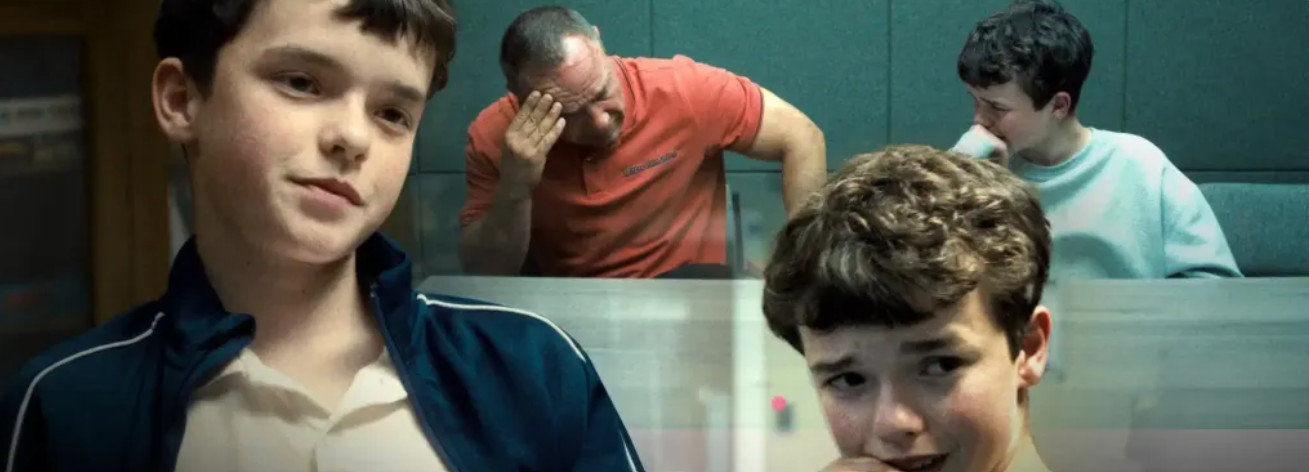
Watching Adolescence struck me deeply. I’ve come back to it several times, drawn by its raw emotional edge and the way it returns time and again to the question: What happens when a young psyche experiences both isolation and is taught harmful self-worth ideas? How does this impact the young person’s emotions and responses to feeling hurt? The fact that the series is lightly inspired by true-world events, makes its sting sharper.
Jamie’s case illustrates how quickly emotional isolation, social pressure, and online influence can intersect in harmful ways for adolescents who are still developing a sense of self.
Adolescence as a Psychological Threshold
Adolescence is a time when the self is still forming. It’s a period of identity searching, emotional intensity, and high sensitivity to belonging and rejection. Developmentally, it’s also when young people begin to separate from caregivers, form their own values, and experiment with independence. But when emotional guidance is missing (or when early attachment wounds go unaddressed) this search for identity can take painful and confusing turns.
In Adolescence, Jamie’s story shows how the need for belonging can quickly turn into anger and despair when a young person feels unseen or devalued. He’s a teenager trying to make sense of himself in a world that offers little safety and few healthy models of masculinity. His emotional responses, from withdrawal to rage, aren’t random. They’re attempts to survive the unbearable experience of invisibility and shame.
From an existential therapy lens, this phase of life forces us to face questions like: Who am I? Why am I here? What makes life meaningful? For some adolescents, especially those who feel powerless or misunderstood, these questions can be overwhelming. When there’s no space to talk about pain, it often gets expressed through behaviour, such as “acting out”, defiance, or even violence.
The Role of the Internet and Online Isolation
One of the most striking elements of Adolescence is how it reflects the mental health crisis among emotionally or socially isolated young men. Jamie’s world is shaped not just by his peers but by the digital communities that surround him: social media feeds, influencer culture, and online spaces that reward anger, dominance, and detachment.
The series highlights how the internet can (inadequately) fill emotional gaps for young people who feel left out or disconnected. Online spaces can offer a sense of belonging, but they can also reinforce harmful ideas about power, masculinity, and worth. When a young man’s sense of self is already fragile, these digital influences can deepen the wound rather than heal it.
Many clinicians are noticing this trend: boys and young men becoming more isolated, spending long hours online, and developing distorted beliefs about relationships, gender, and identity. What begins as a search for connection can quickly become a cycle of comparison, resentment, and emotional numbing.
These young teens might describe feeling “invisible,” “angry for no reason,” or “disconnected from everyone.” The screen becomes a substitute for real connection: a place to perform, project, or hide. The challenge, both for parents and therapists, is to help rebuild real-world connection and emotional literacy in a culture that rewards detachment.
Emotional Intensity and the Fear of Abandonment
Throughout the series, Jamie’s emotions move between extremes: attachment and withdrawal, affection and anger, vulnerability and control. Rather than labeling this as “dysregulated,” it’s more useful to understand it as an emotional survival strategy.
When someone grows up with inconsistent love, high criticism, or emotional neglect, they may learn that relationships are unpredictable—that affection can vanish, and that rejection can feel unbearable. This can lead to intense emotional reactions to even small experiences of disconnection.
Jamie’s shifts in emotion (his panic when misunderstood or his aggression when rejected) reflect a young person who’s desperate to feel significant but terrified of being hurt again. In therapy, we often see adults who still carry these patterns that formed early in life: people who crave closeness but sabotage it out of fear.
A Look at the Psychologist Episode
Episode 3 (the one featuring Jamie’s psychological assessment) captures this tension clearly. The psychologist asks him questions about morality, accountability, and empathy. What stands out most is the space between them: his defensiveness, silence, and confusion about what’s expected.
It’s intense to watch, because the scene reveals how unfamiliar and uncomfortable self-reflection can feel for someone who’s never been safely seen before.
Jamie alternates between compliance and resistance, offering minimal answers, then pushing back with hostility, and even tries to humiliate the psychologist at points. The psychologist maintains calm presence, neither punitive nor rescuing. She tries to meet him as a person, not a diagnosis. When she says, “I’m not here to trap you; I’m trying to understand you,” we sense the first moment of real contact.
That moment mirrors the therapeutic process: creating a space where a person can feel safe enough to be vulnerable, at least enough to be able to feel seen, and begin distinguishing who they are from what they’ve done or what their inner dialogue is telling them.
From a depth and existential therapy perspective, the episode also highlights a broader issue or concern clients can have: if therapists rush to categorize behavior instead of exploring what’s driving it. Being analyzed instead of understood can reinforce a sense of alienation.
The Bigger Picture: How Systems Shape Young Minds
Adolescence also reflects how our larger systems (schools, families, and digital culture) often fail to contain the emotional lives of young people. When adults focus on control, punishment, or image management, they leave little room for curiosity, vulnerability, or repair.
For young men especially, this creates a dangerous gap. They’re taught to be self-reliant and emotionally detached, yet they’re surrounded by pressures that demand constant performance. The result is an identity built on defense rather than depth.
In existential terms, this is the crisis of being versus seeming. Many young people are performing selves online while privately feeling hollow, anxious, or enraged. Therapy can help reintroduce authenticity for an individual of any age, guiding clients back toward self-awareness, relational connection, and responsibility that grows from understanding, not fear.
Therapeutic Reflection and Takeaways
For therapists and readers alike, Adolescence invites reflection on what helps young people (or any age) heal:
1. Belonging and connection before correction:
Emotional regulation can’t develop in isolation. A sense of safety and connection must come first.
2. Curiosity over judgment:
Behaviors that look “manipulative” or “dramatic” in youth often mask unmet needs for validation and control.
3. Offline connection:
Encourage families and communities to rebuild spaces where people can feel known outside of screens.
4. Meaning-making:
Help clients explore values, purpose, and self-worth beyond performance or power.
Questions for Reflection
1. What does belonging mean to you, and how did you learn that definition growing up?
2. How do you handle moments when you feel unseen or misunderstood?
3. What role does technology play in your sense of self or connection to others?
4. How can you tell the difference between being visible and being truly known?
Summary
Adolescence is a difficult series to watch, but an important one. It captures the emotional and social realities many young people are living through today: disconnection, shame, and the desperate search for significance.
As therapists, educators, or parents, the lesson isn’t about blaming the internet or labeling behavior. It’s about recognizing that isolation breeds distortion, and that what looks like aggression often hides a deep fear of being forgotten.
When we meet that fear with understanding and accountability, healing becomes possible. In therapy, that often begins with a simple but powerful act: giving someone the experience of being fully seen; not as a problem to fix, but as a person learning how to exist.
____________________________________
Meet Rebecca Steele, Registered Social Worker, Psychotherapist (MA, MSW, RSW, CCC)
Rebecca is a Waterloo-based trauma therapist offering virtual counselling across Ontario. With over a decade of experience, she helps adults navigate trauma, anxiety, OCD (including “Pure O” presentations), and self-esteem. Her insight-driven depth therapy approach supports self-understanding, emotional healing, and lasting change. Book an appointment or learn more about her online therapy services.
Located outside Ontario? You can explore Rebecca’s coaching and consulting offerings here.





